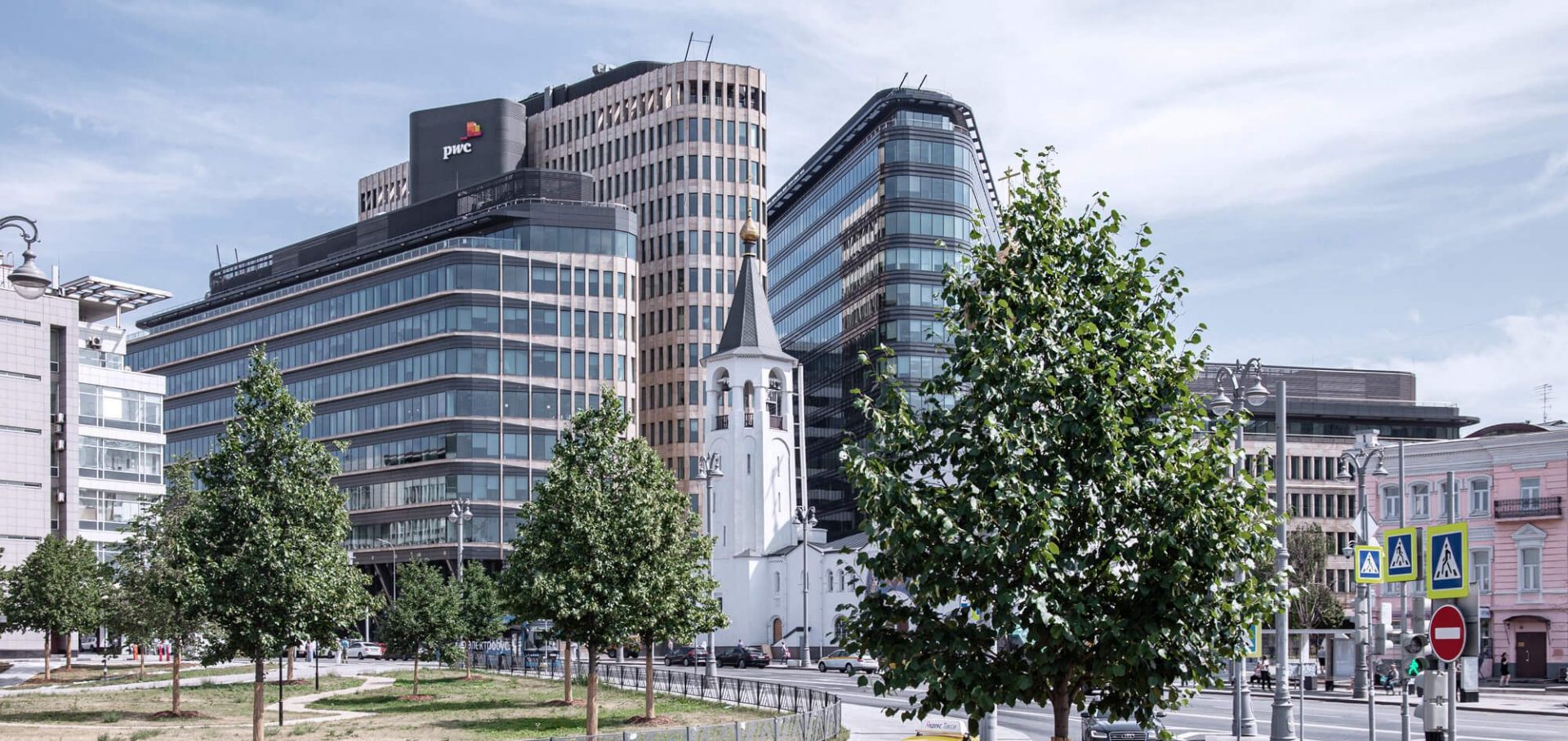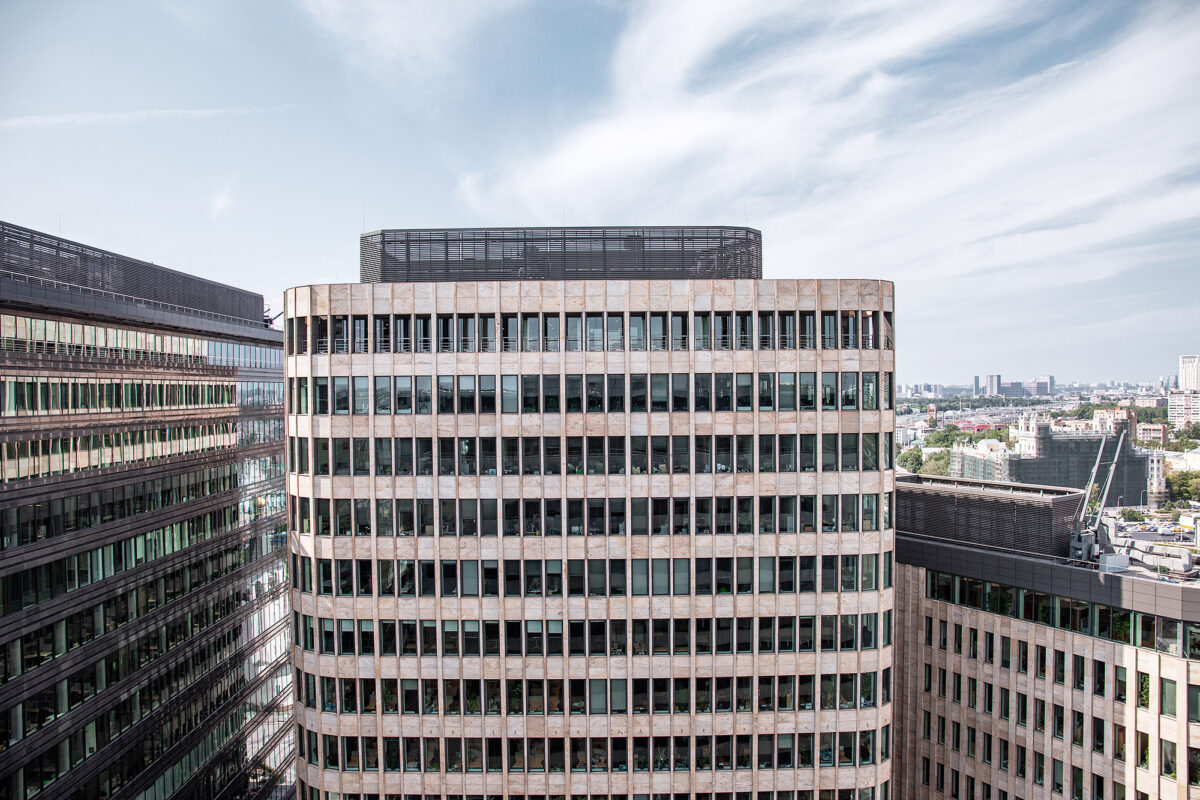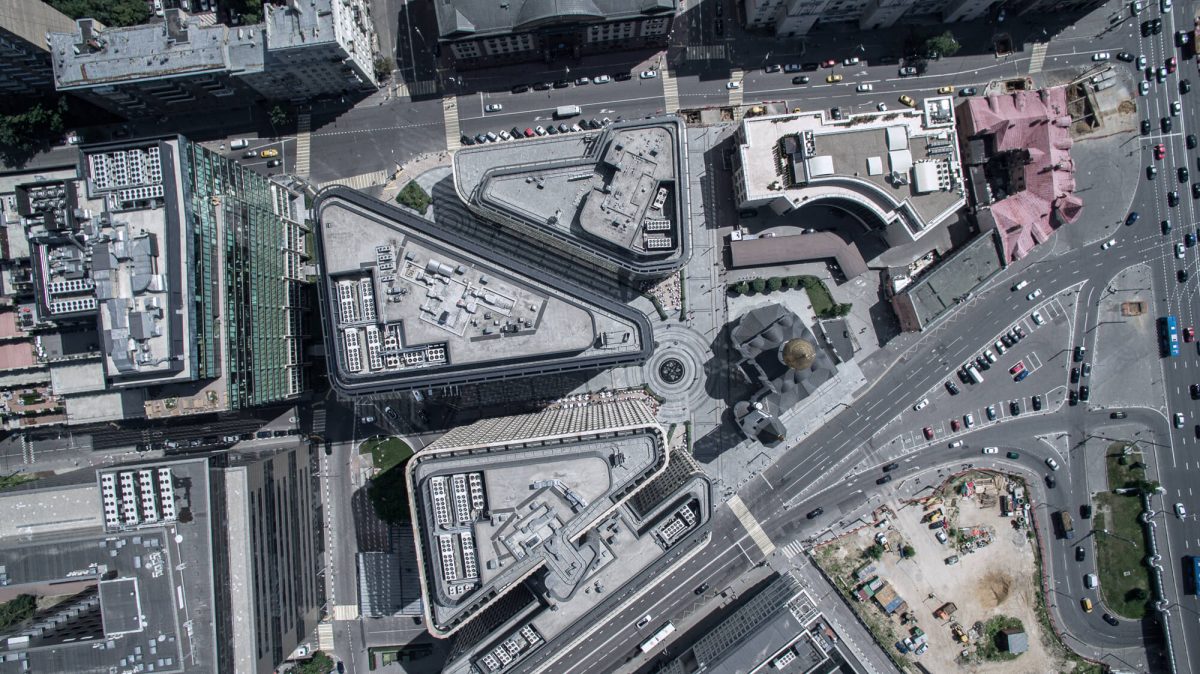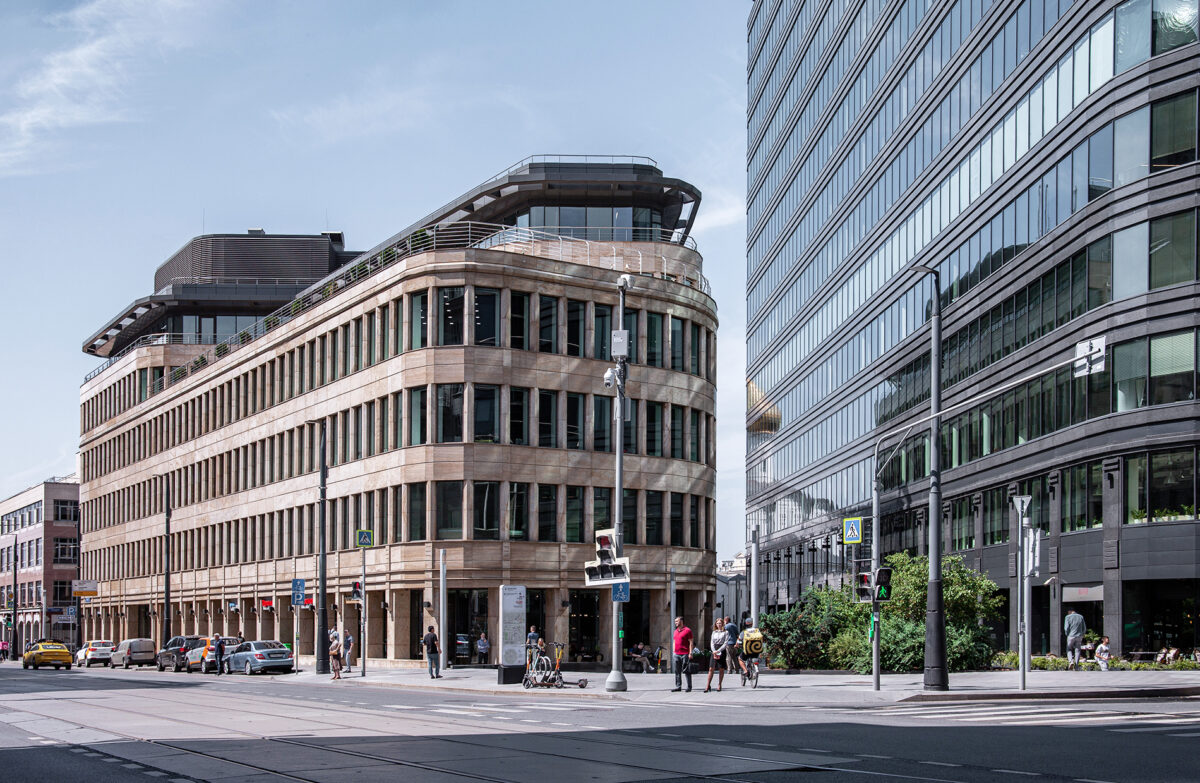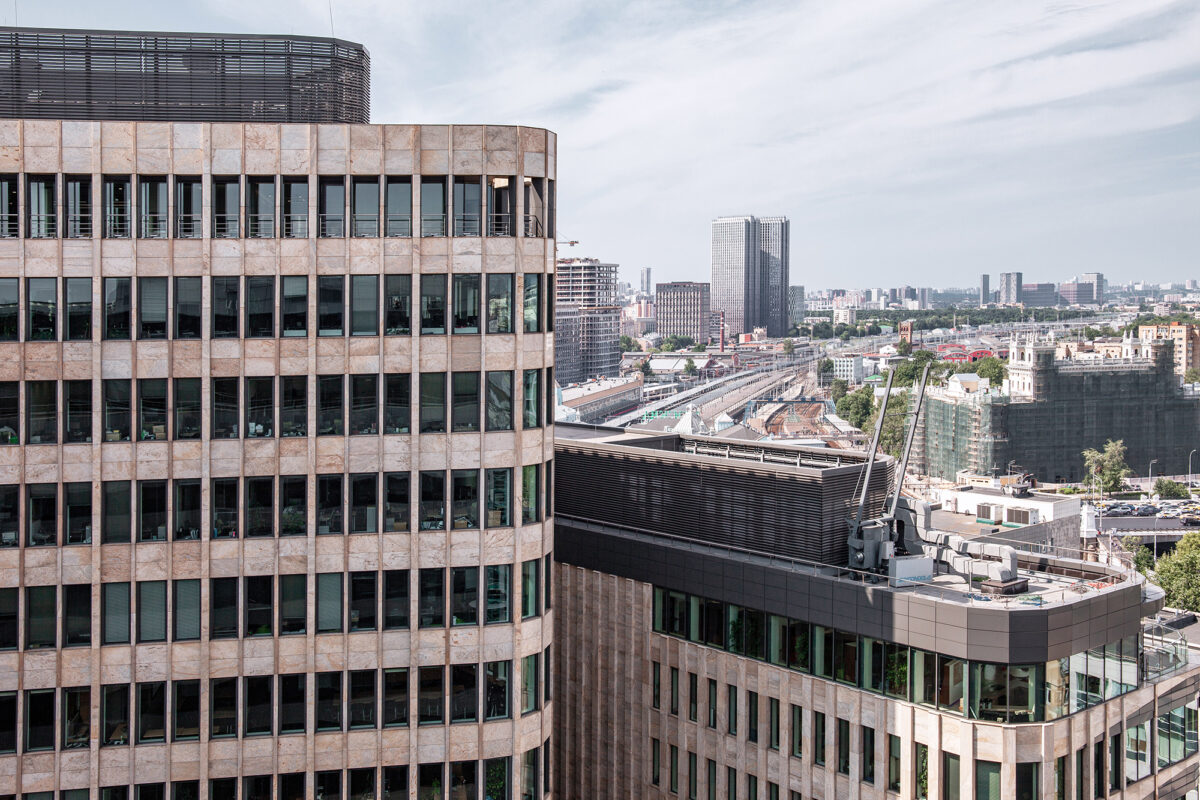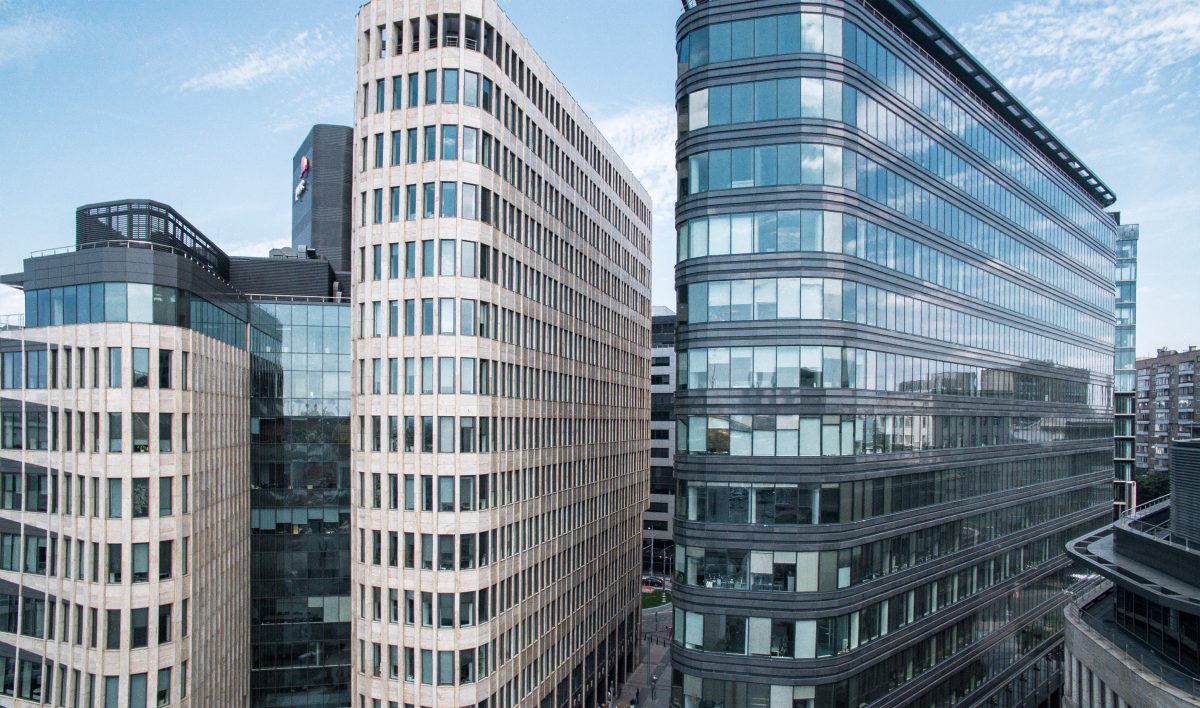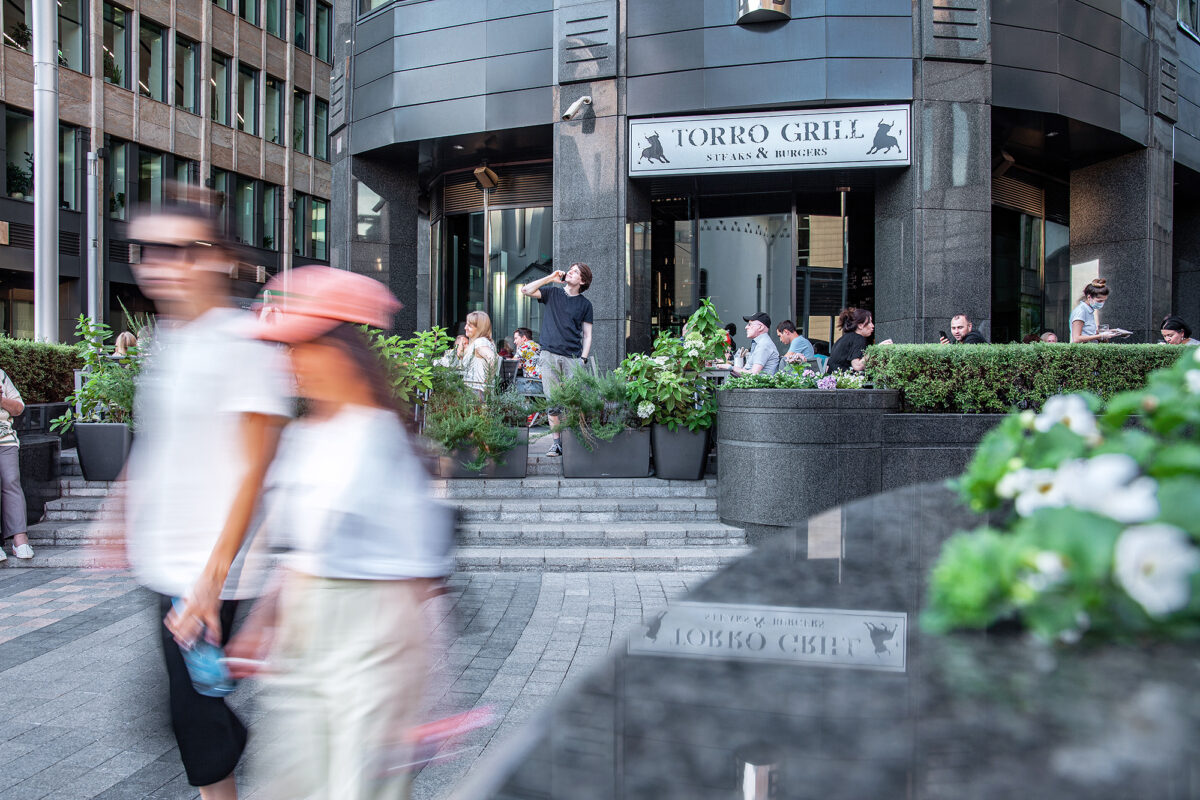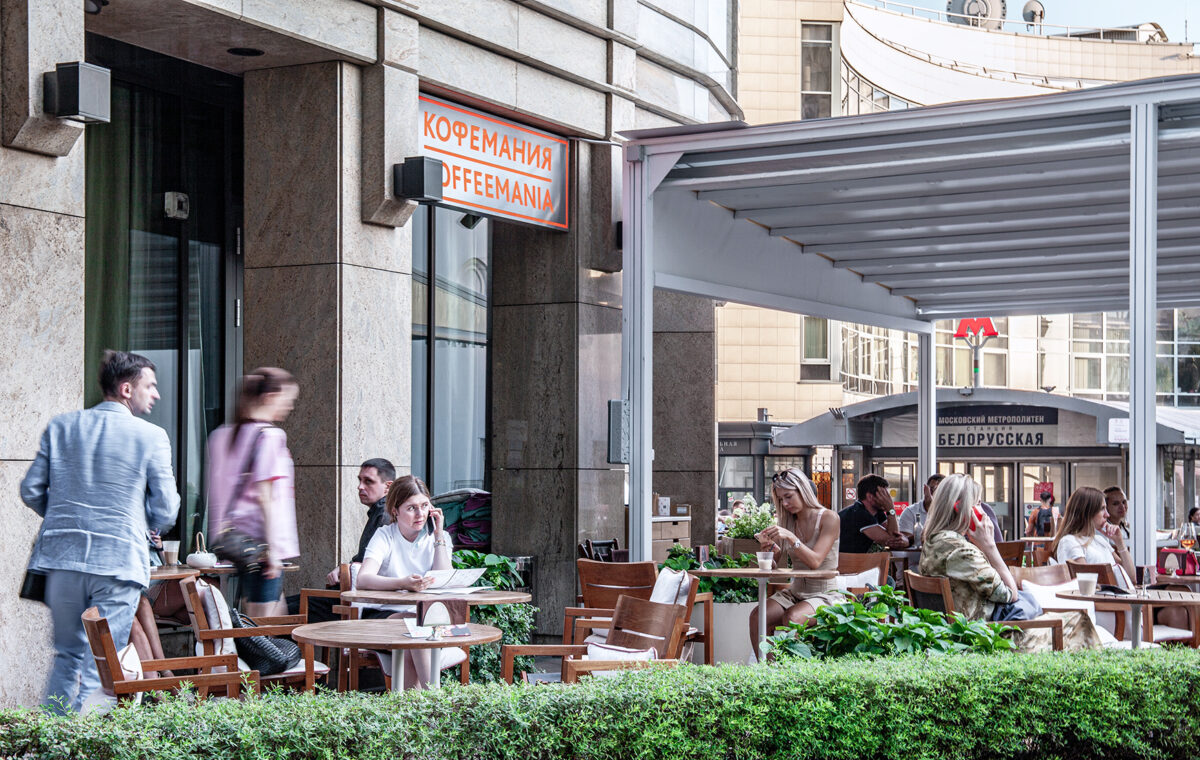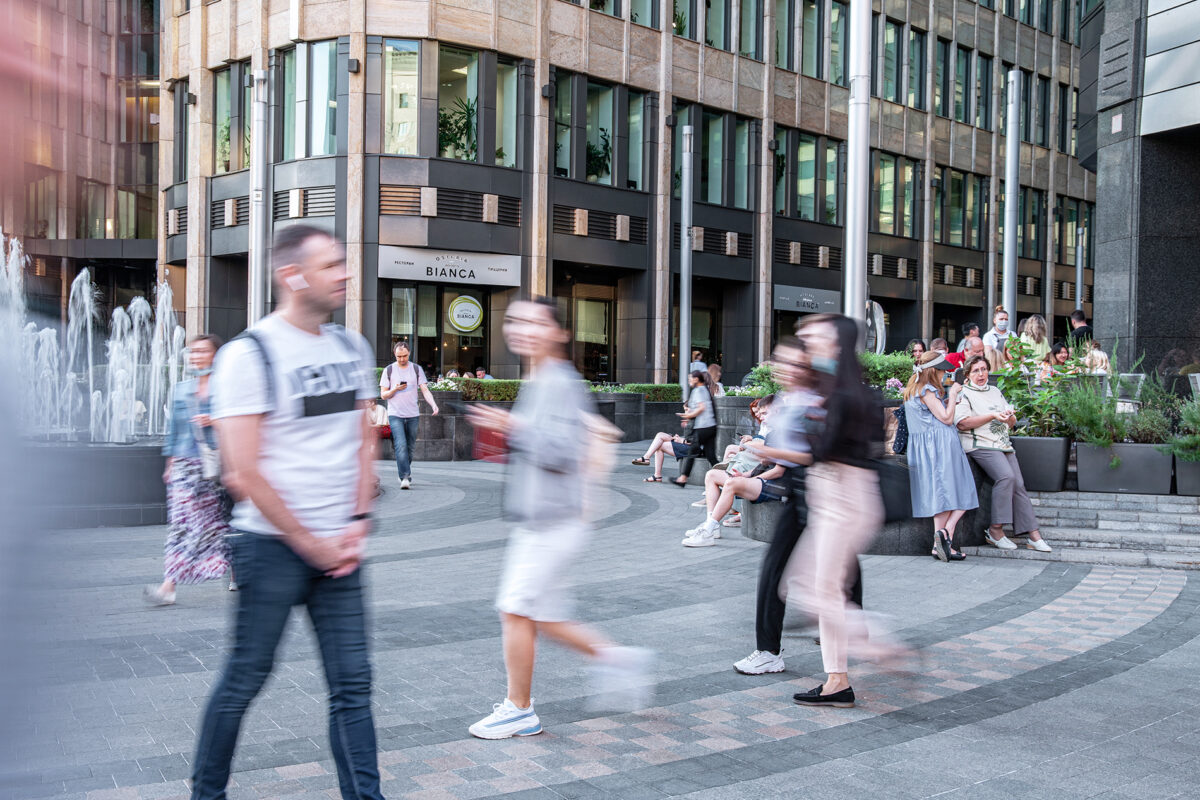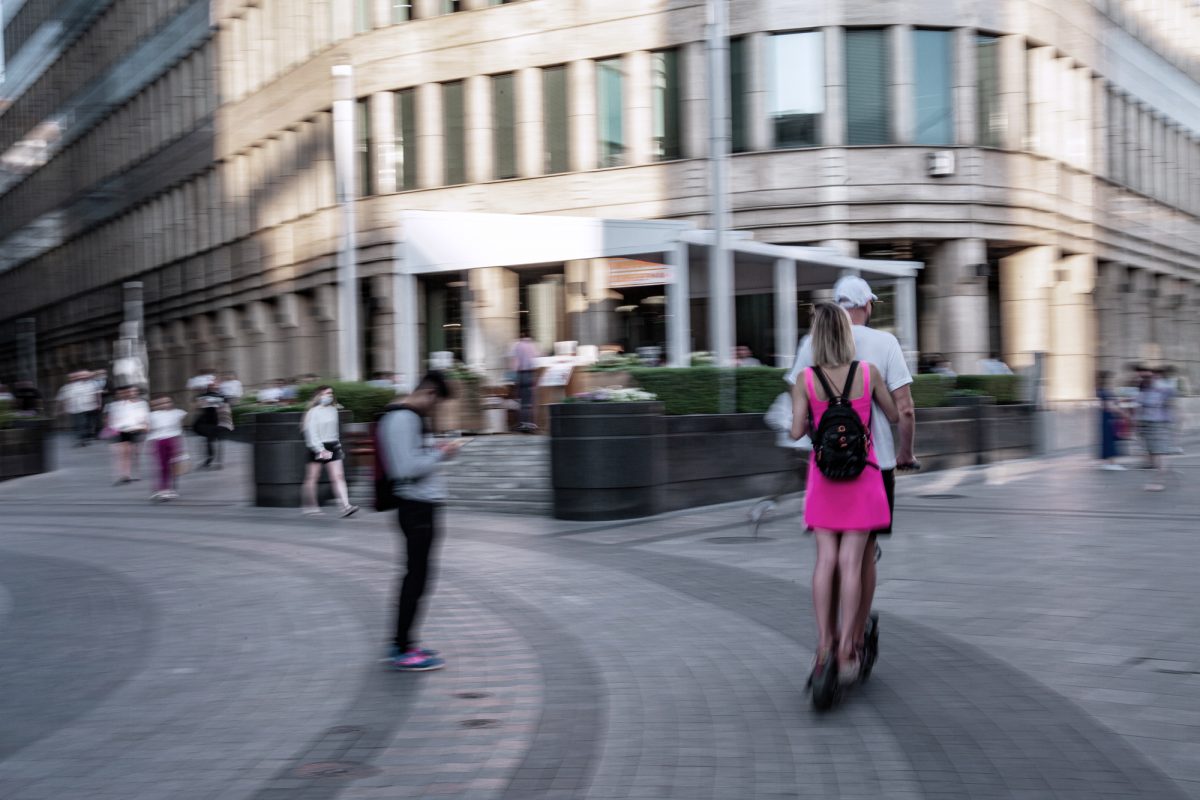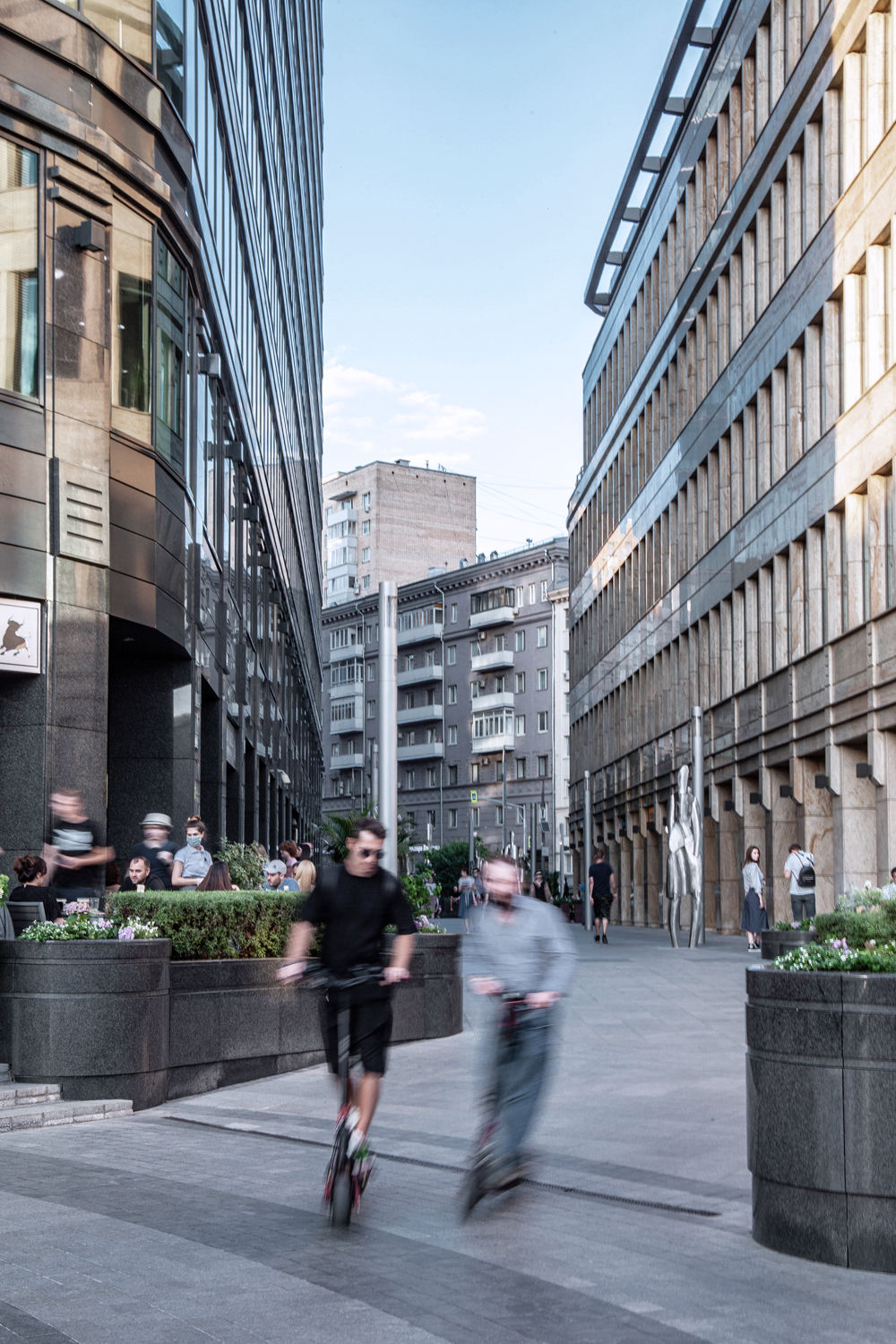The centre came into existence in the 2000s as a completely new development on land previously occupied by a roadway and parking lots, adjacent to an Old Believer church built at the start of the 20th century.
The site, at the top of Tverskaya Street and close to the Garden Ring (Moscow’s main thoroughfare), was the obvious choice for creation of a new business zone, responding to rapid business development and the arrival of large foreign companies in Russia after 2000. Launch in 2007 of the Aeroexpress shuttle train service, connecting nearby Belorussky railway station to Sheremetyevo Airport, made the location still more attractive.
The initial design plan called for construction of three high-rise towers connected by covered walk-ways. However, it was finally decided that such a design would negate existing architecture in this part of Moscow, and a more restrained, “European-style” solution was chosen.
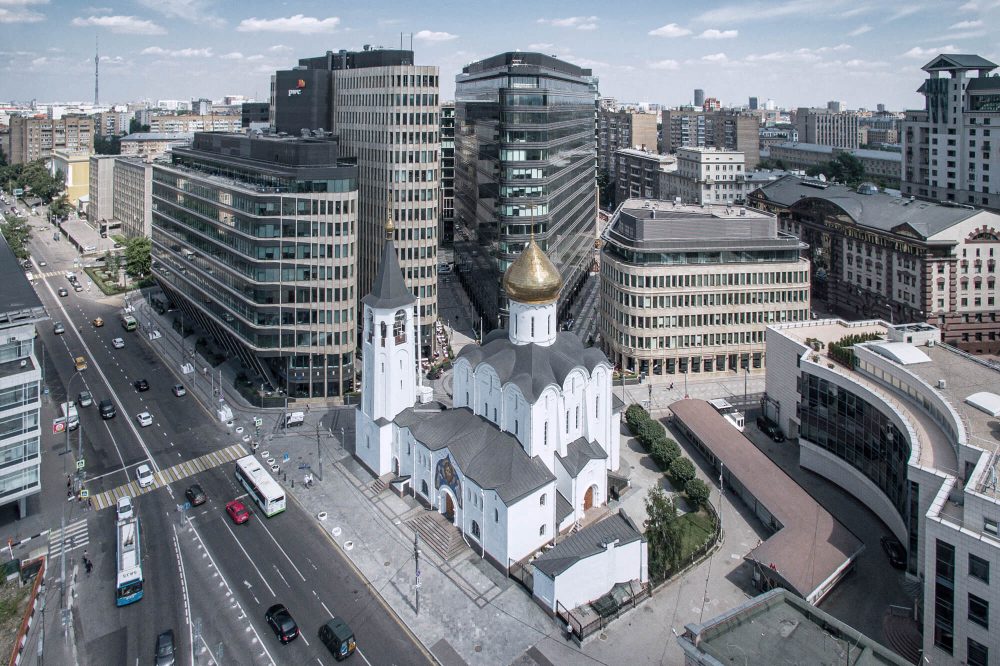
Today, the three buildings of the complex radiate out from the historic church, creating a new rhythm for the pedestrian pathways between them. One building consists of a pair of interconnected volumes of different heights, so that the whole complex appears to have four, rather than three parts. The rounded silhouettes of the buildings bring a sense of harmony to this focus of urban life. A decorative fountain on the square between the buildings accommodates a festive tree for the Christmas and New Year season (often featured on Instagram pages).
Much of the ground-floor area at White Square is taken up by cafés and restaurants, which are extended by tables on the street during the summer. The broad range of restaurant concepts draws visitors from all over the city, so that White Square is alive and bustling by day and by night.
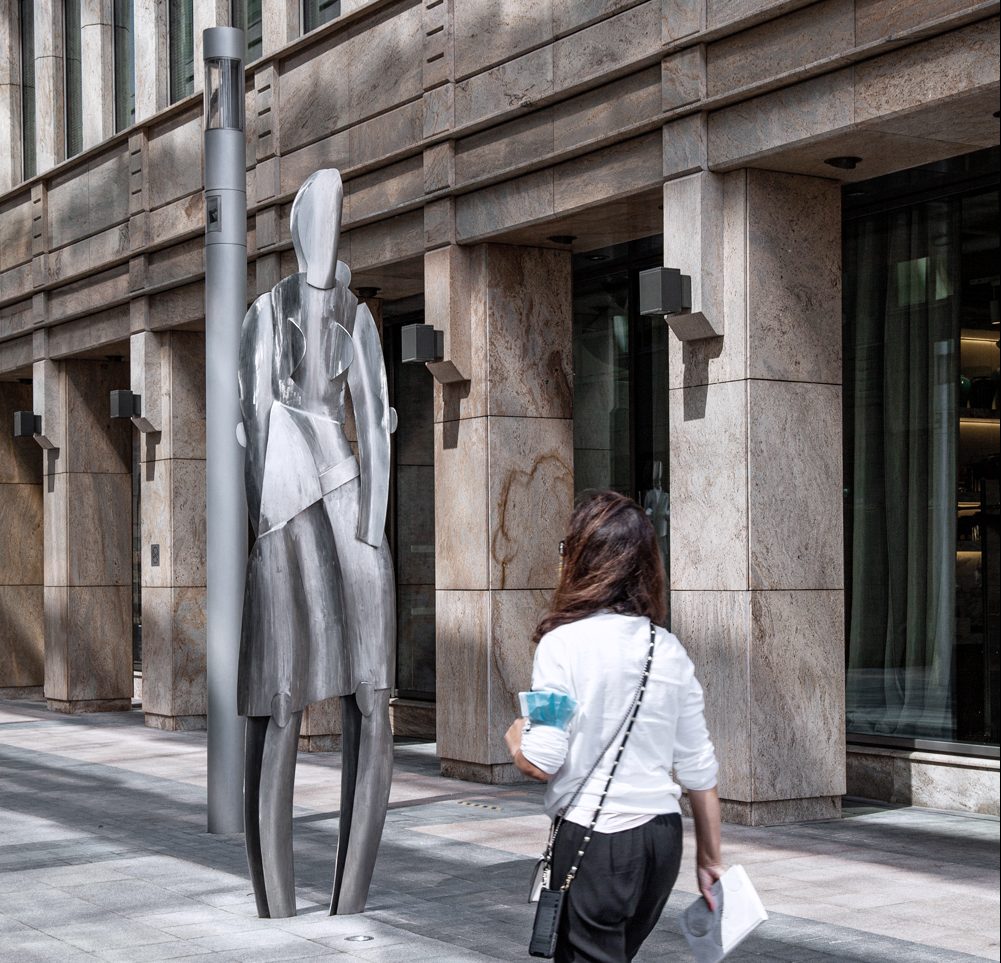
A sculptural-spatial composition, entitled White City, by sculptor Georgy Frangulyan was installed in the outdoor space at White Square in 2014. Frangulyan is the author of works commemorating Russian cultural and political figures such as Bulat Okudzhava, Joseph Brodsky and Yegor Gaidar. His art at White City consists of human figures, each about 3.5 metres high, made of stainless steel using a collage technique. The seven figures, who blend with the surrounding space to present a single object and experience, symbolize seven representatives of the metropolis: they are generalized and impersonal, but each of them is unitary and complete. The clarity of their silhouettes emphasizes the rationality and precision of urban life. The White City composition is an integral part of the pedestrian section of the complex: the figures do not decorate building facades, but invite movement around them. Each figure lives its life as part of the city, among people, merging with the pedestrian stream and the surrounding landscape.

